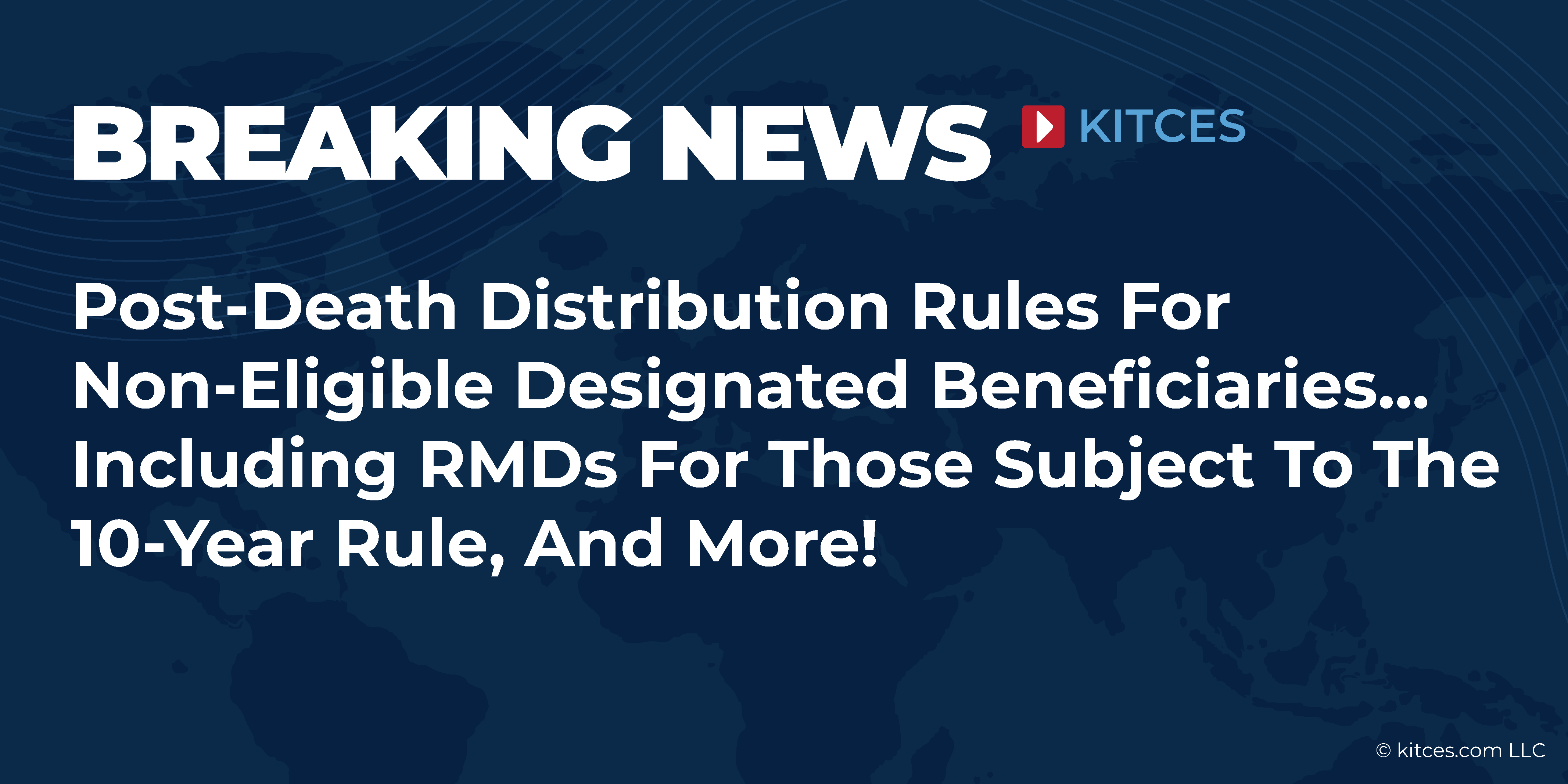When the original SECURE Act was passed in December 2019, it brought sweeping changes to the post-death tax treatment of qualified retirement accounts. One of the biggest changes was to eliminate the prior “stretch” treatment of post-death distributions for most non-spouse beneficiaries, who are now subject to the so-called 10-Year Rule requiring beneficiaries to fully distribute inherited retirement accounts by the end of the 10th year following the original account owner’s death.
In early 2022, when the IRS issued its initial Proposed Regulations regarding the SECURE Act’s provisions, it included another bombshell: Not only would so-called “Non-Designated Beneficiaries” be subject to the 10-Year Rule, but, if the original account owner had been subject to Required Minimum Distributions (RMDs) prior to their death, the beneficiary would also need to take annual RMDs throughout that 10-year period (in addition to fully distributing the account by the end of the 10th year).
And now, in its new Final Regulations issued on July 18, 2024, the IRS has confirmed the requirement for Non-Designated Beneficiaries to take RMDs annually (although for beneficiaries who would have been required to take RMDs in 2021–2024 but didn’t, the IRS has confirmed that there will be no penalty and no requirement to make up the missed distribution, meaning the new regulation effectively starts with RMDs required to be taken in 2025).
Beyond the confirmation of the general post-death RMD rules, the 260-page Final Regulations document offers a slew of other regulatory guidance for specific circumstances where the new rules for Eligible and Non-Eligible Designated Beneficiaries apply. These include:
- New rules for handling undistributed RMDs in the year of an account owner’s death;
- A new “Hypothetical RMD” rule for surviving spouses who initially elect to use the 10-Year Rule but later choose to roll over or treat the inherited account as their own;
- Specification that when a plan participant has 100% of their plan balance in a Designated Roth account, any Non-Eligible Designated Beneficiaries are not required to take annual RMDs during the period of the 10-Year Rule;
- Clarification of the requirements for successor beneficiaries who, depending on the circumstances, may need to either begin a new 10-year period after which the account must be fully distributed or finish out the original beneficiary’s 10-year period;
- New definitions of which beneficiaries of a See-Through Trust are also considered beneficiaries of the retirement account and which may be disregarded for retirement account purposes;
- A new rule providing that when a See-Through Trust is divided into separate trusts for each beneficiary upon the death of the retirement account owner, the RMD rules will be applied individually for each trust beneficiary rather than uniformly across all beneficiaries based on the beneficiary with the shortest required distribution timeline; and
- Clarification that when a retirement account (including IRAs) owns both annuity and non-annuity assets, those assets can be aggregated together for the purposes of calculating the participant’s RMD and that payments from the annuity can count against the total RMD for both annuity and non-annuity assets.
Along with the new Finalized Regulations, the IRS also released a new set of Proposed Regulations dealing with some unanswered questions around the SECURE 2.0 Act passed in late 2022. Most notably, the new Proposed Regulations confirm that the RMD age for individuals born in 1959 is 73 (since a drafting error in the final legislation inadvertently set that RMD age to both 73 and 75) and fill in rules around the SECURE Act’s new provision allowing surviving spouses of retirement account owners to elect to be treated as the decedent for RMD purposes – although, as the Proposed Regulations make clear, the treatment for surviving spouses won’t really be identical to the decedent’s since the surviving spouse must still calculate RMDs based on their own life expectancy, and none of their own beneficiaries will qualify as Eligible Designated Beneficiaries.
As a whole, these regulations introduce significantly more complexity to the process of tax planning around retirement accounts, particularly after the death of the account’s original owner. Which makes it all the more valuable for financial advisors to get familiar with the new rules and their planning implications for different circumstances, since clients will be more reliant on sound advice to give them clarity and help them avoid pitfalls when deciding what to do!


